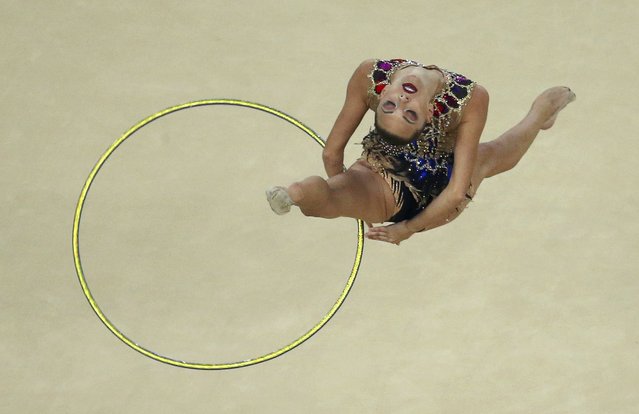09 Aug 2023 00:00:00,post received
0 comments
Details

2016 Rio Olympics, Rhythmic Gymnastics, Final, Individual All-Around Final, Rotation 1, Rio Olympic Arena, Rio de Janeiro, Brazil on August 20, 2016. Melitina Staniouta (BLR) of Belarus competes using the hoop. (Photo by Ruben Sprich/Reuters)
21 Aug 2016 11:16:00,post received
0 comments

A stewardess holding a lightsabre poses for photos with visitors during a tour of the Star Wars themed All Nippon Airways ANA R2D2 Boeing 787 Dreamliner aircraft at Singapore's Changi Airport November 12, 2015. The aircraft was opened to the media on Thursday as it makes its first Asian stop outside Japan. (Photo by Edgar Su/Reuters)
15 Nov 2015 08:07:00,post received
0 comments

Amateur astronomer Bill Snyder has been involved with astrophotography since 2007. Photo: The Cygnus Wall is in the southern area of NGC7000 also known as the North America Nebula. It is approximately 1800 light years from Earth, and is in the constellation Cygnus. The Wall is an energized shock front and contains the most concentrated star formations in the nebula. The size of the North America Nebula is about 4 full moons. (Photo and caption by Bill Snyder)
30 Oct 2013 09:15:00,post received
0 comments

People attend the 49th annual New York City Gay Pride Parade in New York, New York, USA on 24 June 2018. (Photo by Erik Pendzich/Rex Features/Shutterstock)
26 Jun 2018 00:01:00,post received
0 comments

Tightrope walker Tatian-Mosio Bongonga hangs from a tightrope as she pauses while scaling the Monmartre hill towards the Sacre Coeur Basilica (not pictured) in Paris, France, July 20, 2018. (Photo by Philippe Wojazer/Reuters)
22 Jul 2018 08:34:00,post received
0 comments

Victoria's Secret Angel Martha Hunt celebrates the 2015 What Is s*xy? List in San Diego on September 26, 2015 in San Diego, California. (Photo by Joe Scarnici/Getty Images for Victoria's Secret)
28 Sep 2015 08:05:00,post received
0 comments

An infrared portrait from NASA's Spitzer Space Telescope which shows generations of stars is seen in this undated NASA handout image released February 14, 2013. In this wispy star-forming region, called W5, the oldest stars can be seen as blue dots in the centers of the two hollow cavities (other blue dots are background and foreground stars not associated with the region). Red shows heated dust that pervades the region's cavities, while green highlights dense clouds. (Photo by NASA/Reuters/JPL-Caltech/Harvard-Smithsonian/Handout)
03 Mar 2013 08:44:00,post received
0 comments
Last searches:

